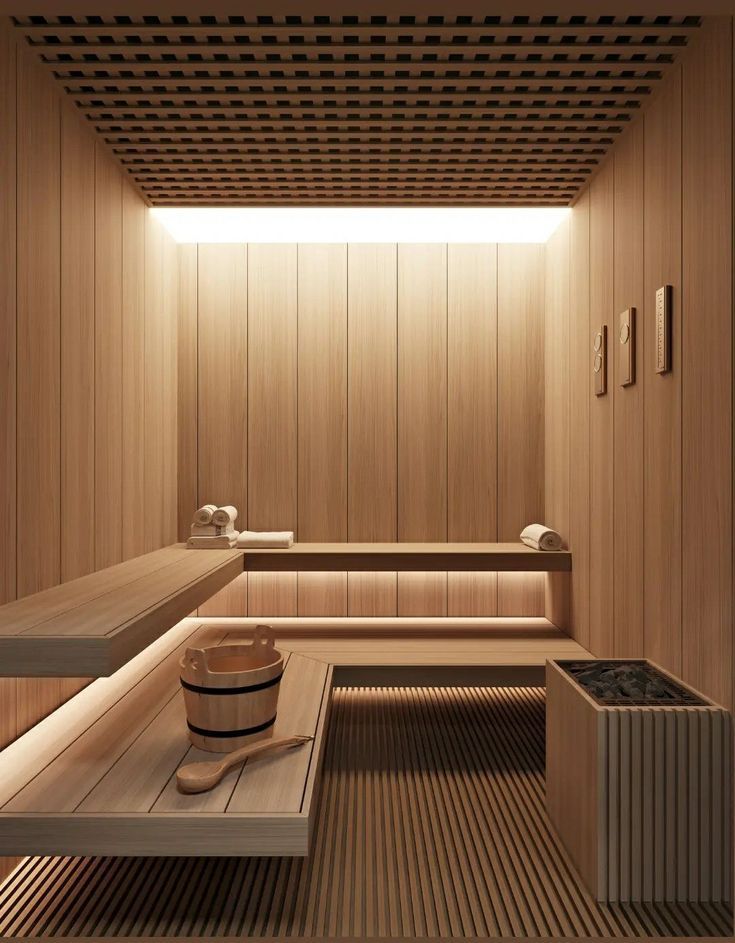Discover How Sauna Rooms Can Enhance Relaxation and Overall Well-being
Sauna rooms have been a symbol of relaxation and wellness for centuries. Whether built with traditional wood-fired heaters or modern infrared systems, saunas create a warm and therapeutic environment that helps the body and mind unwind. Regular sauna sessions are associated with numerous benefits, including improved circulation, stress relief, muscle recovery, and even better sleep. Learning how saunas work and what types exist can help you choose the perfect way to rejuvenate both physically and mentally.

1️⃣ What Is a Sauna Room?
A sauna room is a small, enclosed space designed to produce heat, typically ranging from 70°C to 100°C (158°F to 212°F), creating a controlled environment for sweating and relaxation. Originating from Finland, saunas have been used for centuries as part of wellness routines. The basic idea is simple: heat exposure increases body temperature, prompting the body to sweat and release toxins while improving blood flow. Over time, the sauna has evolved from rustic wood cabins to modern, high-tech installations available in homes, spas, and gyms.
2️⃣ Types of Sauna Rooms
There are several types of saunas, each offering a unique experience based on the heating method and humidity level:
-
Traditional Finnish Sauna: Heated by wood stoves or electric heaters, it produces a dry heat. Pouring water over hot stones increases humidity temporarily.
-
Infrared Sauna: Uses infrared light to heat the body directly rather than warming the air. It operates at a lower temperature but provides deep tissue relaxation.
-
Steam Sauna (Steam Room): Filled with moist heat generated by boiling water, it helps hydrate skin and open pores.
-
Barrel Sauna: A popular outdoor design made from wood in a rounded shape, promoting efficient air circulation and even heating.
Understanding these types helps users choose the environment that best suits their comfort and health goals.
3️⃣ The Health Benefits of Sauna Use
Regular sauna bathing provides multiple physical and mental health benefits.
-
Improved Circulation: Heat causes blood vessels to dilate, increasing blood flow and oxygen delivery throughout the body.
-
Muscle Relaxation: After exercise, heat helps reduce muscle tension and joint stiffness.
-
Detoxification: Sweating naturally assists the body in eliminating toxins through the skin.
-
Skin Health: The process opens pores, removes impurities, and enhances skin clarity.
-
Stress Reduction: The warmth promotes endorphin release, the body’s natural “feel-good” chemicals.
-
Better Sleep: Sauna use before bedtime can help regulate body temperature and improve sleep quality.
While saunas provide many advantages, it’s important to use them safely — staying hydrated and limiting session time to avoid overheating.
4️⃣ Mental Wellness and Emotional Balance
Beyond physical health, saunas play a role in mental well-being. The quiet, warm atmosphere encourages mindfulness and relaxation. Many people use saunas as a space to disconnect from technology and daily stressors. Studies suggest that regular sauna sessions may help reduce symptoms of anxiety and mild depression by lowering stress hormone levels. The consistent heat exposure promotes calm breathing, slows heart rate, and enhances overall mood.
5️⃣ Sauna Design and Experience
Modern sauna rooms combine comfort with design. Many are made from cedar or hemlock wood, which releases a pleasant aroma and resists moisture. Lighting plays a key role — soft, amber-toned lights create a peaceful mood. Some high-end saunas also include aromatherapy options, allowing users to infuse essential oils into the steam.
Digital panels now allow temperature control, timers, and even Bluetooth connections for ambient music, turning a simple heat session into a holistic wellness ritual.
6️⃣ Sauna Sessions and Safe Practices
A typical sauna session lasts 10–20 minutes. Beginners should start slowly, allowing the body to adapt to the heat. Drinking water before and after each session helps prevent dehydration.
Some people enjoy contrast therapy, alternating between hot sauna exposure and cold showers or ice baths — a technique known to improve circulation and boost energy. However, individuals with certain medical conditions such as heart disease or low blood pressure should consult a healthcare professional before frequent use.
7️⃣ Cultural and Historical Context
In Finland, saunas are part of daily life. They are places not only for physical cleansing but also for social connection. Friends and families gather in saunas to relax and share conversations. In Japan, similar traditions exist with onsen (hot springs), while in Turkey, hammams serve as communal bathing areas. Across the world, the sauna has become a universal symbol of purification and wellness, transcending cultures and time.
8️⃣ Sauna Technology Today
Today’s saunas use advanced technologies to improve efficiency and comfort. Infrared panels consume less energy while offering the same benefits as traditional heat. Some models feature oxygen ionization systems, which keep the air fresh and clean. Smart home integration allows users to preheat saunas remotely, making wellness routines easier to maintain. These innovations demonstrate how ancient traditions continue to evolve with modern lifestyles.
9️⃣ Who Can Benefit from Sauna Use?
Sauna therapy is suitable for most adults seeking stress relief or muscle recovery. Athletes often use saunas for post-workout recovery, while office workers find them useful for relaxation after long hours of sitting. Individuals dealing with mild tension, fatigue, or insomnia may also benefit. However, it’s essential to respect personal limits and avoid excessive heat exposure.
Conclusion – A Timeless Ritual of Renewal
The sauna remains one of the most effective, natural ways to promote holistic wellness. It combines heat therapy, relaxation, and mental clarity in one experience. Learning about different sauna types, how they function, and their benefits allows individuals to make informed choices about their health routines. Whether in a spa, a gym, or your own home, the sauna represents more than warmth — it’s a space for restoration, mindfulness, and balance.







